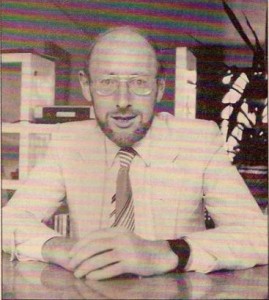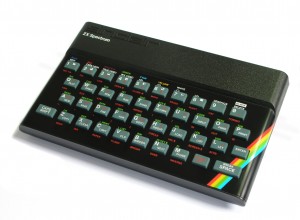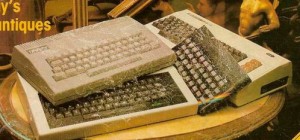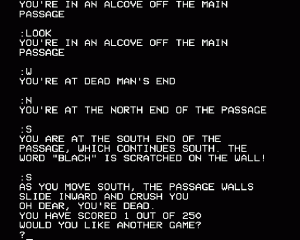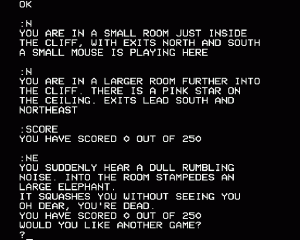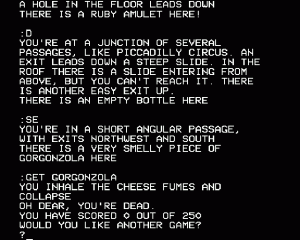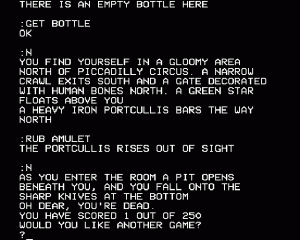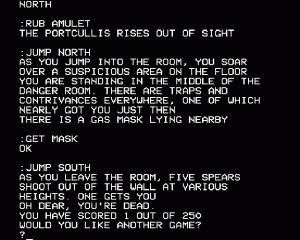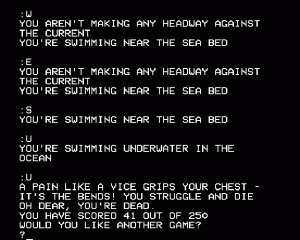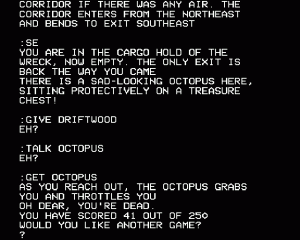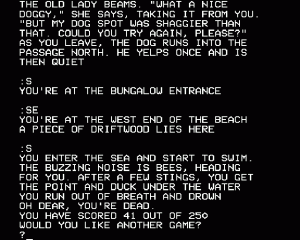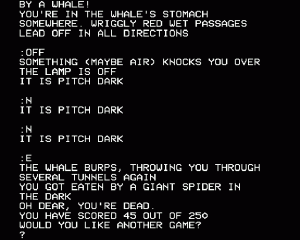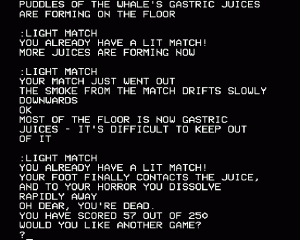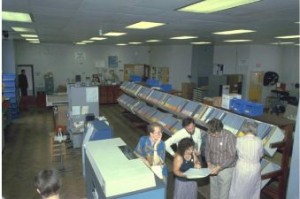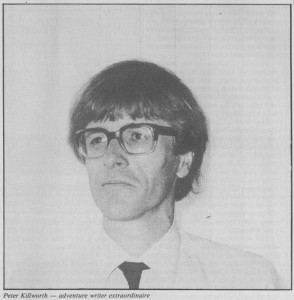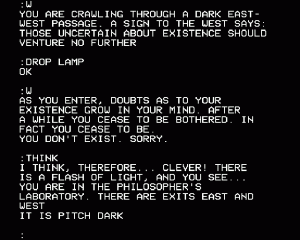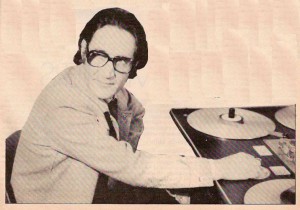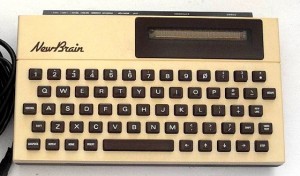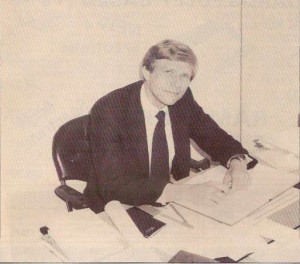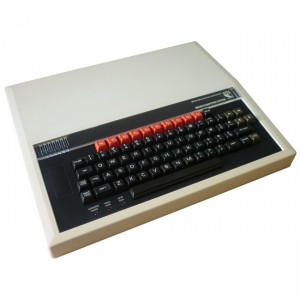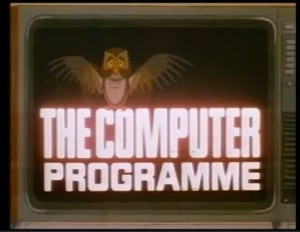To put it mildly, Clive Sinclair was not pleased by the BBC’s decision to make the Acorn Proton the standard bearer of British computing. He had some legitimate complaints to levy. The process of selecting the machine, for one thing, could under no interpretation be considered fair and above-board. The BBC had simply handed the contract to the government-controlled Newbury, then when that fell through slipped it to Acorn as the most viable remaining manufacturer that was not run by Sinclair; his company and others never had a chance. The price of the Acorn machine also seemed at odds with the BBC’s original intentions for the program. The £400 BBC Micro Model B (the really practical and desirable model) was simply too expensive to become the fixture in everyday British homes that the BBC had imagined. And then there was the question of whether a government agency had any right or business to interfere with the workings of private industry in the first place. (Admittedly, this was a question that Sinclair, like so many businessmen, tended to answer differently depending on whether he was the one directly benefiting from the government’s largesse.)
In addition to practical complaints, however, Sinclair was personally wounded by the BBC’s choice. They had chosen Chris Curry, the erstwhile junior partner he had mentored, over him; anointed Curry’s company the Great Hope for British computing rather than his own. In response, he lashed out. His interviews from the period — and he did plenty of them — read like the reactions of a jealous lover, strewn with invective toward the BBC peppered with occasional expressions of dismay that they didn’t pick him. From the August 1981 Your Computer:
“When you have a company like ours, which is easily dominating the whole of Europe in personal computers, we believe we have done a very important job in popularizing computers. It is a real disappointment to have your own national broadcasting corporation completely ignore you.”
“What the BBC is doing, it is doing badly and it is damaging the whole progress of computers in this country. We have put a new version of BASIC into our machines. It has been highly praised in the UK and abroad, because of its editing facilities. We developed into it features such as single-keyword entry. None of that is in the BBC version.”
On the perceived slight of not being consulted in the government’s planning for IT Year ’82:
“The government has it so wrong. Frankly, they are so bad at it, it would be better if they left it alone. Fine, they should be doing things for the computer market, but this recent Department of Industry scheme is so peculiar. We were not even talked to.”
But Sinclair reserved his most strident scorn for the rival whom he perceived to have gone behind his back to make the deal with the BBC. All pretense of civility fell away from his relationship with Curry, whom the BBC “for some strange reasons allowed to stick [their] logo on his machines” which would otherwise not have a chance in the marketplace. No shrinking violets themselves, Curry and his partner Hermann Hauser responded in kind with shots at Sinclair’s “duct-tape” brand of engineering that made his machines an impossibility for a serious organization like the BBC. Even Paul Kriwaczek, the producer of The Computer Programme, got in on the act to defend the BBC’s choice, calling Sinclair’s machines “throwaway” products. It was quite a petty display all around, if also a very entertaining one.
Sinclair largely won this public-relations war. The British computer industry was full of other, smaller companies feeling equally spurned by the BBC deal, equally convinced that their own latest designs could have fit the bill much better than anything Acorn had to offer. Sharing a common enemy with Sinclair made them, at least in this sphere, his friend. With virtually the entire industry standing on one side and just Acorn and the BBC on the other, it was easy to conclude that the BBC Micro must be the bad idea and/or botched execution they said it was. On Sinclair’s side most of all, though, was his popular image as the benevolent “Uncle Clive,” largely the creation of his advertising agency, Primary Contact.
Sinclair certainly looked the part of the slightly eccentric but ultimately cuddly boffin, and Primary Contact played the image up for everything they were worth. As Ian Adamson and Richard Kennedy wrote in Sinclair and the “Sunrise” Technology, even long before the controversy over the BBC Micro, “Sinclair was marketed as the maverick doyen of hi-tech, the lone entrepreneur with the vision to take on the Americans and the Japanese. The implication was that by supporting Sinclair the consumer was advancing the cause of British innovation in the face of the brute strength of foreign marketing might.” Now the entrenched bureaucrats of the BBC could be added to the forces he defied. The Clive Sinclair of the popular imagination spent his time puttering away in a basement laboratory somewhere before emerging with designs that were both simpler and better than the competition thanks to his grounded British know-how. He then, unmaterialistic boffin that he was, sold them for a ridiculously low price and just blinked bemusedly when praised for it. Spreading the joy of computing and helping his country were their own rewards. His anger at the BBC was the righteous anger of the honest, practical man confounded by sycophants and politicians.
The reality was very different. Sinclair certainly had electrical know-how, but he was no computer engineer. His machines were designed by others to his specifications, which always began and ended with the price he intended to sell them for and the profit margin he needed to preserve even at that price. Except for these absolutes, all else — including not only features but fundamental quality controls — was negotiable. Characteristically, Sinclair got most involved with the actual engineering of his “creations” when hunting down which component parts he could source for the cheapest prices. Personally, he was domineering, uninterested in the opinions of others and possessed of a deadly combination of overweening arrogance and a deeply buried insecurity that occasionally flashed to the surface when his decisions were questioned. His contempt extended to his customers, whom he regarded as sheep waiting for the Man of Genius (i.e., him) to tell them what they wanted. Surprisingly, Sinclair didn’t even believe that that would necessarily be computers in the long term. He had come into this field largely to finance the quixotic further development of two absurd products he had been dreaming about for years: a miniature, portable television and an electric car. Computers were just a means to that end, a way to capitalize on a passing fancy of the fickle everyman.
Of course, as French philosophers have taught us, the perceptions engendered by mass media are often as real in practical terms as anything else. The British computer industry needed a company hell-bent on selling its machines so cheaply that almost anyone could afford one, even if that meant cutting some corners. And the British public needed an Uncle Clive persona to put a friendly, comfortably British face on all of this disruptive new technology and tell them they had nothing to fear from it. Sinclair was such a terrible businessman that this ride couldn’t possibly last very long. But it would be fun while it did; whatever else you can say about Clive Sinclair, he’s never been boring.
When not sniping at the BBC in the press, Sinclair spent late 1981 and early 1982 pushing hard on his own new computer that would show them how wrong they had been to choose Acorn over him. The successor to the ZX80 and ZX81, it would borrow much of its internal and external engineering from those earlier machines, remaining a tiny thing that looked more like a desk calculator than a computer. The big change, from which it derived its name — the ZX Spectrum — was the addition of color and graphics capabilities. It would deliver these in a package costing just £125 for 16 K or, in another coup, £175 for a full 48 K, well under half the price of the 32 K BBC Micro Model B.
In many ways the Spectrum was a typical Sinclair product, the result of brutal cost-cutting. The keys were made of squishy rubber, which further added to the calculator-like impression and were only marginally more comfortable than the membrane keyboards of the ZX80 and ZX81. Many choices seemed a product of the echo chamber inside Sinclair, owing little to any sort of practical real-world considerations. When designing the ZX80, the company had developed something they called “one-touch” BASIC programming, which matched each BASIC command word to a key on the keyboard. The idea was that the user need only type a single key for each command instead of the whole word, thus cutting back on typos and limiting the interacting she had to do with the ZX80’s atrocious keyboard. As they added more commands to their BASIC with each successive model, however, the idea became increasingly ridiculous. By the time the Spectrum emerged the user had to memorize arcane sequences for many commands that required holding down multiple shift and control keys and some octopus-like finger dexterity. The sequences were both more difficult to remember and more difficult to enter than just typing in the words would have been; some commands actually required as many or more key strokes than there were letters in the word. How this absurd system could have made it out the door is a mystery — or perhaps a tribute to the dominance of Clive Sinclair, who had decided that “one-key” entry was a key to his company’s success and wasn’t interested in hearing otherwise.
In other ways, though, the Spectrum was a Sinclair like no others. Sinclair wasn’t exactly a company one might have expected to deliver cutting-edge aesthetics, but they shocked here. The machine’s externals, by industrial designer Rick Dickinson, have been enshrined — and for good reason — as a design classic. The svelte ebony case with its flash of color stands out from all of the other computer models of its era, with their chunky, lumpy frames and acres of bland beige plastic.
In practical terms, the Spectrum finally answered a question that had been uncomfortably nagging at the backs of the minds of many people ever since this computer thing got rolling in the press. Everyone understood that computers were the wave of the future and all that. But, if you weren’t running a shop and needing to keep inventory or something, what could you really do with one? Sure, a small minority might spend hours every night tinkering with the vagaries of BASIC, but that was of little practical value and destined to remain a niche interest at best. For everyone else, most notably children and teenagers, the Spectrum finally provided a better answer: you could play games. Its graphics hardware could display fifteen colors at a resolution of 256 X 192, with the very significant restriction that each 8 X 8 block of the screen could use only two of them. Still, combined with the 48 K of memory that allowed a decent scope for complexity in game designs, it was good enough. Its tiny size even meant that you could stuff it into a trench-coat pocket to cart to your mate’s house after school. For all of the caveats and limitations that came with it, the Spectrum was the right machine at the right time at the right price to launch computer games into the mainstream in Britain.
In retrospect one of the most bemusing things about the feud between Sinclair and Acorn is that, as Curry and Hauser at least remarked in their more lucid moments, the BBC Micro and Sinclair Spectrum were barely competitors at all. Sinclair largely created a new, home-computer market in Britain, just as Commodore did with the VIC-20 in the United States. (The VIC-20 was also sold in Britain, but didn’t have quite the same impact.) The BBC Micro, meanwhile, put Acorn in a position similar to that of Apple in the U.S., making more expensive, better supported machines for a more “professional” (or, at least, well-heeled) consumer.
The Spectrum was officially launched on April 23, 1982, but it’s pretty safe to say that no consumer received a machine before June. Sinclair, who often trumpeted in interviews that he “never made the same mistake twice,” was nevertheless “utterly astonished” by the demand for the new machine, as he had been for each model that preceded it. The company’s practice of advertising that consumers who ordered directly from them would receive their computers within 28 days prompted much ire as waiting periods stretched to three months and beyond. This in turn prompted a sternly worded warning from the Advertising Standards Authority, a ritual that played out with every Sinclair product launch. It was 1983 before Sinclair cleared its backlog, at which time the company started the whole shortage over again when they reduced prices by more than 25%. In the end none of the angst mattered that much. Where else, Sinclair asked, were customers going to find a 48 K micro with 15-color graphics capabilities for his prices? Most people would wait, he figured — and he was right.
So, IT Year was a success beyond architect Kenneth Baker’s wildest dreams. At its end there were three times as many computers in British homes as there had been at its beginning. One could certainly argue how much of this explosion was really due to the government’s efforts; one suspects that Clive Sinclair would have some strong opinions on that subject. But, however we apportion the credit, things would never be the same; computing in Britain went mainstream with the IT Year and, crucially, the Spectrum. A generation of British children went to school to learn about computers and BASIC and many other subjects on the sturdy BBC Micros. The same kids came home to hang out with friends and play games in front of their “Speccys.” Can you guess which machine is more fondly remembered by Britons today? The poor BBC doesn’t have a chance.
The Spectrum also spawned a huge games industry to feed this eager market. Speccy programmers came to love the machine, as much because of as in spite of its limitations. With its crazy BASIC entry system and dry error messages like “Nonsense in BASIC,” the Speccy felt like theirs — quirky, slightly off-kilter, and somehow distinctly British in its sensibility. Many of the games they produced had a sensibility to match, very different from that of their American cousins. It’s mostly the innovative action games like Manic Miner and Jet Set Willy that are remembered today, but the Speccy also had adventures. Oh, boy, did it have adventures — thousands of them. We’ll look at one of the earliest and most important of them next time.
